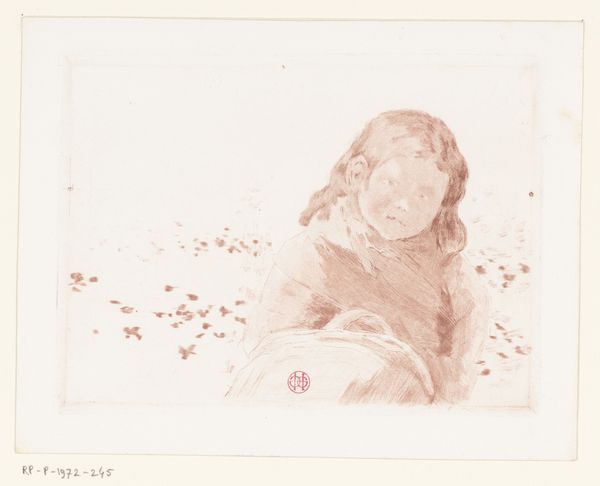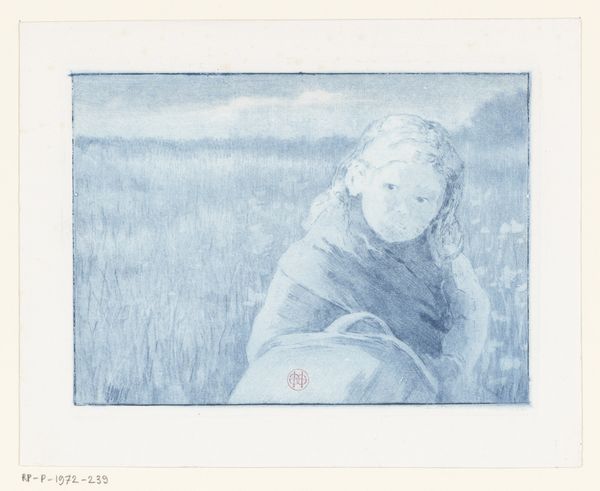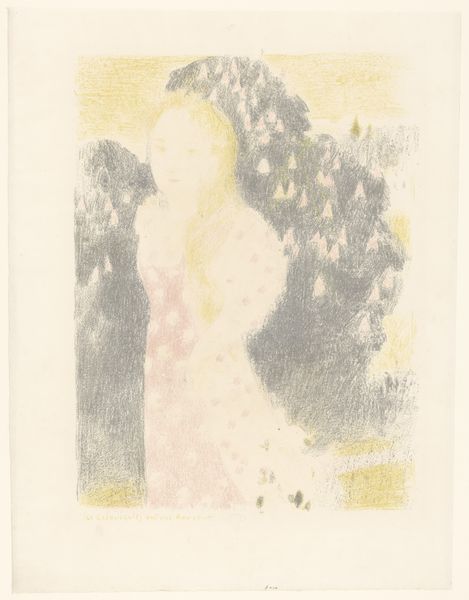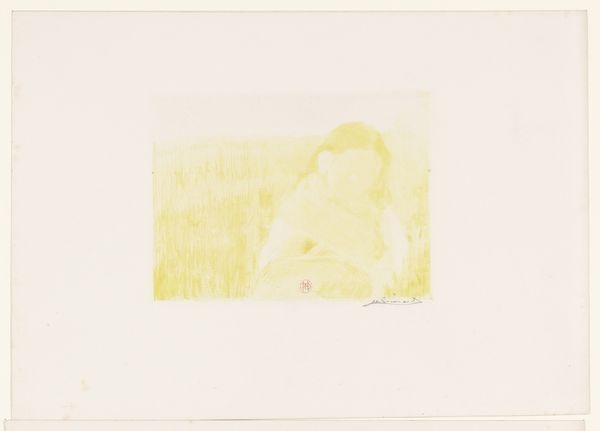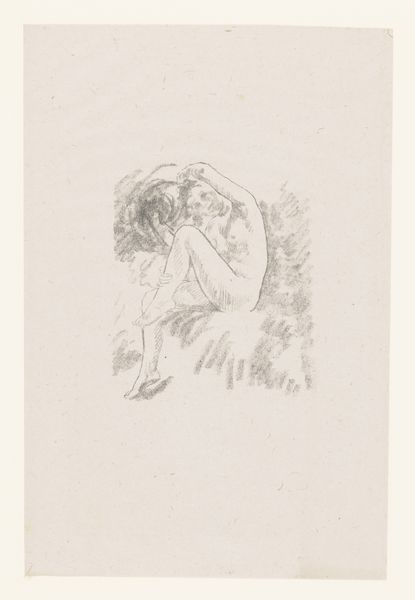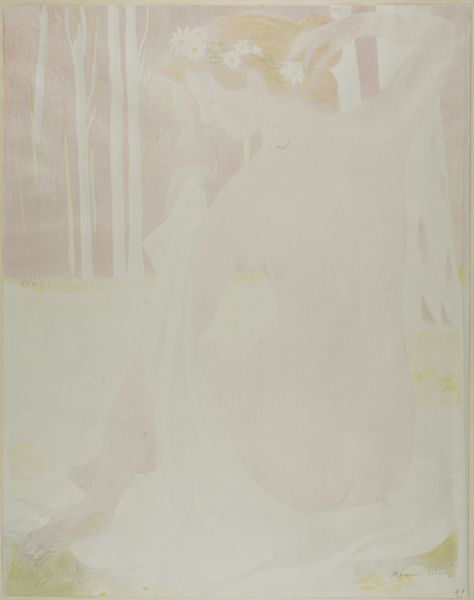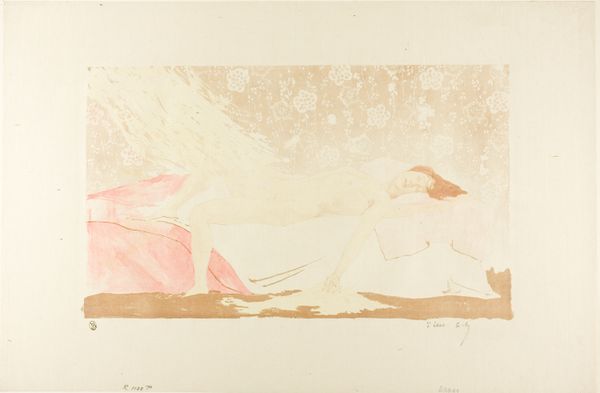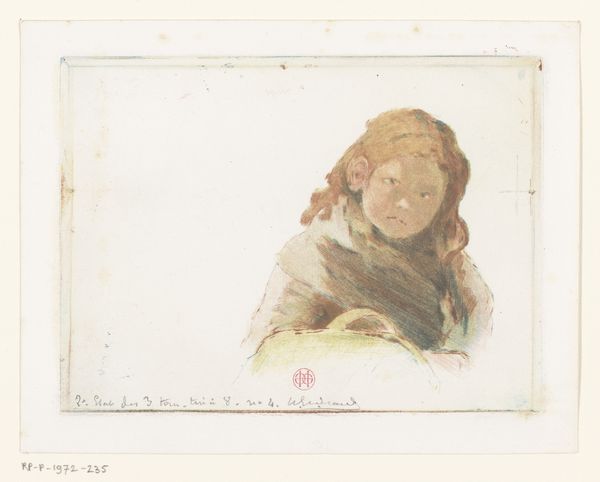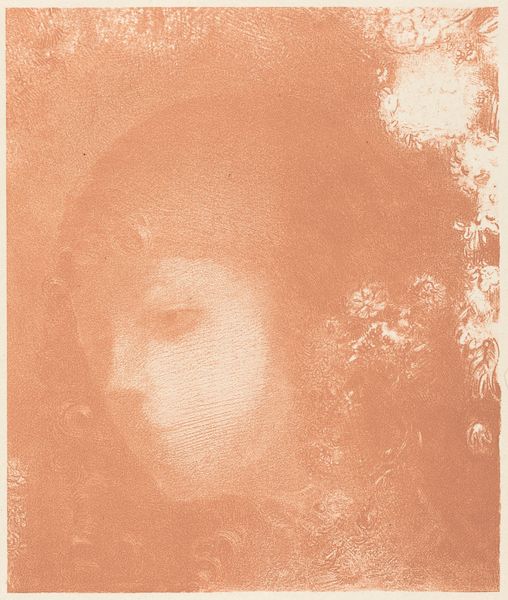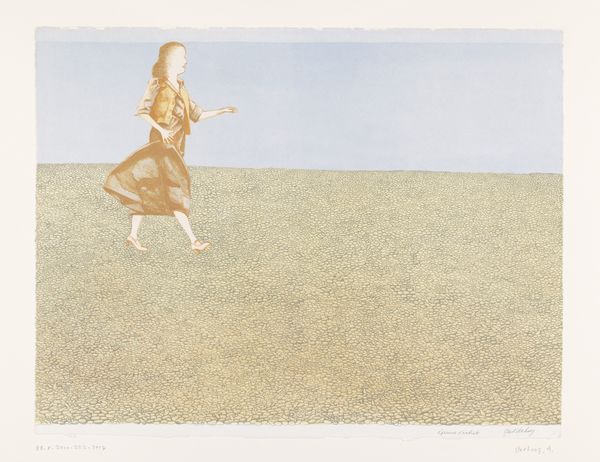
drawing, plein-air, paper, watercolor
#
portrait
#
drawing
#
impressionism
#
plein-air
#
landscape
#
figuration
#
paper
#
watercolor
#
watercolour illustration
#
genre-painting
#
botanical art
#
watercolor
Dimensions: height 118 mm, width 159 mm
Copyright: Rijks Museum: Open Domain
Curator: This watercolor drawing is entitled "Girl with Basket in a Flower Meadow," attributed to Henri-Charles Guérard, created sometime between 1856 and 1897. Editor: There's a dreamy, ethereal quality to this piece. The delicate washes of color and the slightly unfocused rendering of the figure give it a fleeting, almost wistful feel. Curator: Indeed. Guérard's style positions this artwork at the intersection of Impressionism and what we might now call proto-feminist themes. Consider the girl’s ambiguous expression: is it resignation, or quiet defiance in a patriarchal society? Is she relegated to simple existence amongst the flower field? Editor: That's a compelling reading. Visually, though, the composition is quite intriguing. Notice the relationship between the girl's form and the surrounding meadow. Guérard's delicate gradations of color, how he creates depth with such subtle variations, and also how he uses of light to unify the subject and ground, drawing you back and forth between these formal relationships. Curator: That merging emphasizes the erasure, of working-class girlhood perhaps, a reminder that, during this period, childhood for many girls, particularly those from poorer backgrounds, was often characterized by premature labor and limited opportunities. How the ‘domestic’ and working spheres often coalesced to define female existences. Editor: It is like a photograph just catching a ray of sunlight at a brief moment. But let’s return to the medium itself. The transparent nature of watercolor adds to the sense of fragility. It accentuates, by means of tone, that same idea of disappearance or making disappear as part of lived, and lost girlhood. Curator: I concur. Its delicacy is the whole point; a kind of silent protest, a ghost within a wider canvas where issues surrounding labor exploitation, class disparity and gender inequality remain ever vibrant. It echoes and asks questions relating to the commodification of the art and also the person. Editor: Seeing your points have provided new eyes through which to observe the art's content and construction, it has provided a refreshing sense of critical vision. Curator: Absolutely. Juxtaposing visual analysis and historical context, even tentatively, unveils a narrative far richer and much more grounded, that speaks to us today.
Comments
No comments
Be the first to comment and join the conversation on the ultimate creative platform.

